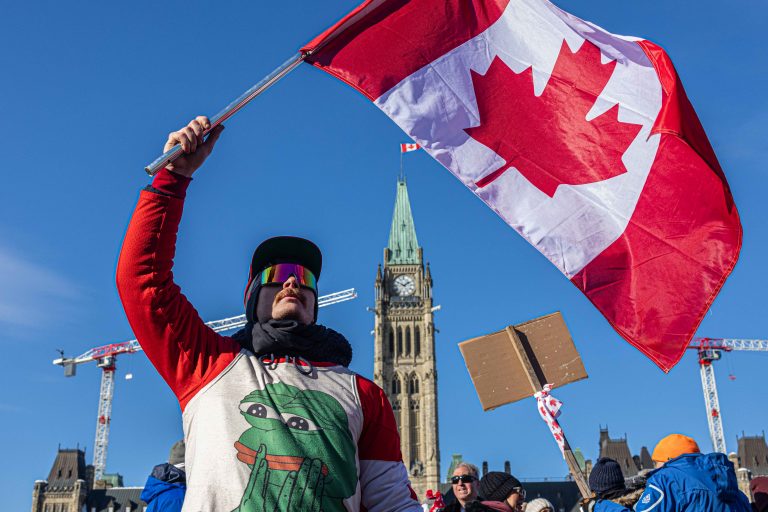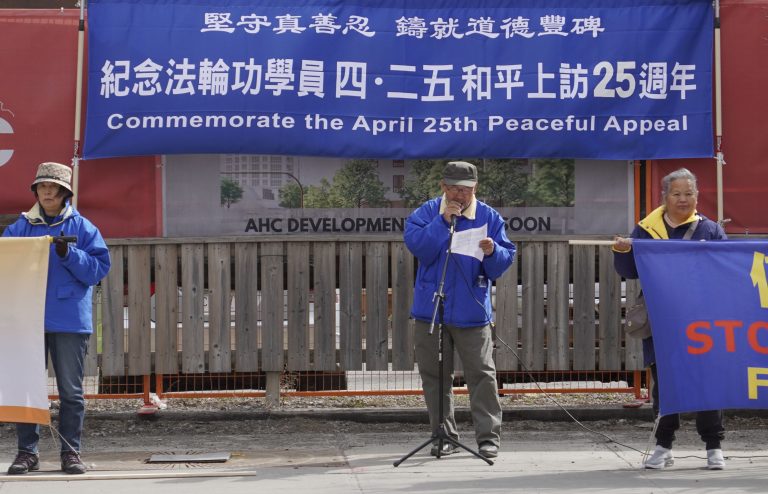As protests continue to rage across Canada with truckers blocking major ports of entry into the country, sporadic displays of patriotism erupting in every major city in Canada and a massive contingent of truckers and their supporters occupying the parliament district in Canada’s capital of Ottawa, authorities are at a complete loss as to how to bring an end to the dissent.
What started as a small convoy of trucks out of the Canadian province of British Columbia has evolved into a mass movement. Canadians of all stripes are gathering to protest draconian COVID-19 mandates that they say are government overreach. With over 80 percent of Canadians over the age of five having received a full two dose regimen of a COVID-19 vaccine, stringent vaccine passport policies in numerous provinces, social distancing, mask mandates among other measures Canada’s hospital system is still overwhelmed with patients.
This reality is prompting many Canadians to question whether the suspension of their rights, guaranteed under Canada’s Charter of Rights and Freedoms, over the past two years has done anything to curb the pandemic. The failure of the government’s response to the COVID-19 pandemic has inspired thousands of Canadians to throw themselves on to the frontlines of the movement.
After six straight days of protesting in Ottawa, authorities have failed to identify a single thing that can be done to stop the protesters short of giving into their demands.
On Thursday, Feb. 3, Ottawa Police Chief Peter Sloly told Ottawa City council members that “I can’t give you a definitive, ‘It’s one day, it’s two days. It’s one week, it’s two weeks,’” when asked when the protests would come under control, the Canadian Broadcasting Corporation (CBC), Canada’s state-funded media outlet, reported.
Success
You are now signed up for our newsletter
Success
Check your email to complete sign up
The Chief of police has flat out said that policing alone will not end the protests prompting some in government and the media to ask whether Canada’s military needs to get involved.
On Wednesday, Feb. 2, Sloly said he may request aid from the armed forces to stop the ongoing Freedom Convoy trucker protest stating that the protest is a national issue.
“This is a national issue, not an Ottawa issue,” Slowly said, adding that “I am increasingly concerned there is no policing solution to this.”
“There is no lawful authority to seal a city, there’s no practical capability to seal a city of this size,” he said asserting that he would need at least 50,000 officers to attempt to dismantle the protest.
The last time the Canadian government utilised its military forces to address domestic crises was in the 1970’s when Justin Trudeau’s father, then-Prime Minister Pierre Elliot Trudeau, invoked the War Measures Act, giving police the right to arrest and detain people on suspicion alone.
While Prime Minister Justin Trudeau — who is fighting off accusations that he is hiding from the protests — has said that military intervention is off the table many, including Canada’s mainstream media, are still mulling over the possibility.
Coutts border crossing protest
The blockade at the Coutts border crossing in southern Alberta continues to snarl traffic. Some progress was made on Feb. 2 which saw truckers open up lanes of traffic in both the north and south directions to allow some cross-border trade to resume; however the concession was contingent on the province of Alberta dropping its vaccine passport program dubbed the “restrictions exemption program” which the government has yet to announce.
However, following the concessions another blockade of trucks convened just 18 kilometers (11.1 miles) north of the primary blockade.
Vehicles waving Canadian flags and sporting signs saying “We Want Freedom” moved up and down the Canadian highway until around 10:30 a.m. on Thursday Feb. 3, when the Royal Canadian Mounted Police (RCMP) said the blockade gradually began permitting traffic through.
While the numbers have shrunk on Parliament Hill from the thousands to the hundreds since last Saturday’s main protest, the city is bracing for another weekend of dissent and is expecting another influx of protesters to swarm the capital.
Meanwhile, Canada’s mainstream media is doing everything in its power to disparage the peaceful, yet boisterous, protests even going so far as to elude that the protests are as a result of Russian provocation and interference.


















